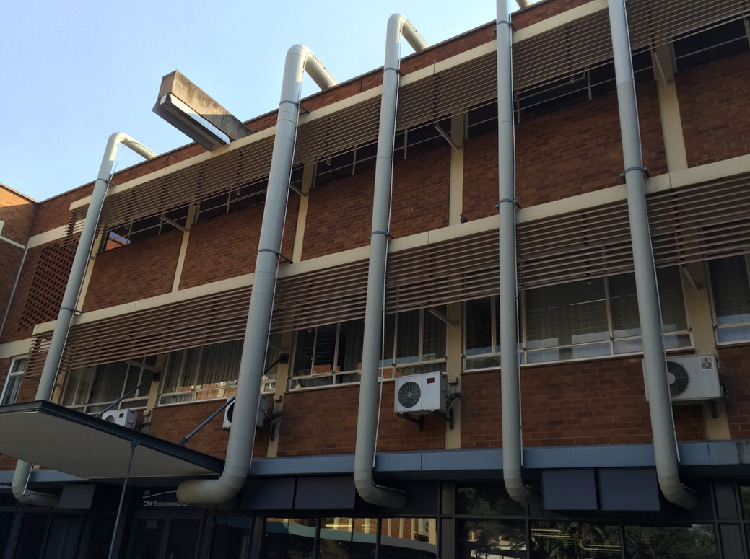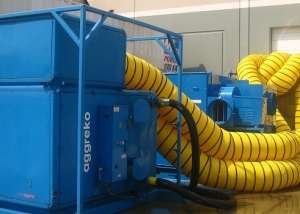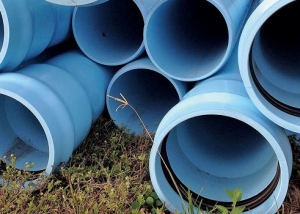Ducts made of polypropylene are products made of modern polymeric material, which differ in many advantages over metal counterparts. The technical characteristics of PP ducts allow them to occupy a leading position in the building materials market. The price of polymer ducts is much lower than for metal counterparts. This is also a huge plus and affects their choice.
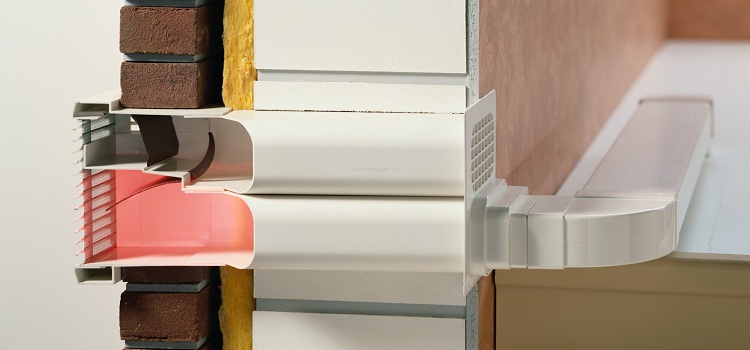
The construction of any object involves the installation of a ventilation system, which can be easily assembled from polymer duct pipes
Content
Features and operational sphere of PP ductwork
Polypropylene ventilation systems are used to supply fresh clean air to the premises of the building and to remove polluted air outside the building. From an operational point of view, polypropylene ducts are quite versatile and are used in both residential and industrial buildings.
Let's consider in more detail in which cases such ducts can be used:
- residential buildings;
- enterprises related to the food industry;
- pharmacological plants;
- chemical manufacturing enterprises.
Helpful information! The most popular are such modern air ducts in residential buildings. This is due to the fact that they do not require any personal care, and their service life can reach several tens of years.
Installation of a ventilation system made of polypropylene is simple and requires a minimum of labor. Such an installation, if desired, can be carried out by almost everyone who does not have special construction skills.
The connection of the individual elements of the ventilation system of this polymer material is carried out using conventional welding. A properly mounted system eliminates traction problems as well as air leaks. In any case, polypropylene ducts are a much more reliable solution than their metal counterparts.
Advantages and disadvantages of polypropylene ducts
In order to understand the characteristics of these products, it is necessary to study their strengths and weaknesses. Consider the main advantages of polypropylene ducts:
- fairly high strength characteristics;
- resistance to harmful corrosive effects;
- smooth inner walls. This quality of polypropylene ducts allows you to increase the throughput of the system, since nothing prevents the movement of air masses;
- resistance to aggressive chemical compounds;
- resistance to ultraviolet radiation;
- resistance to temperature fluctuations. The minimum temperature that PP parts can withstand reaches −40 ° C;
- in addition, polypropylene parts are moisture resistant and do not pass gas;
- polypropylene is not prone to the accumulation of dust and dirt;
- ease of installation;
- maintenance of this material is simple and cheap;
- long service life.As mentioned above, communication from such details can last several decades.
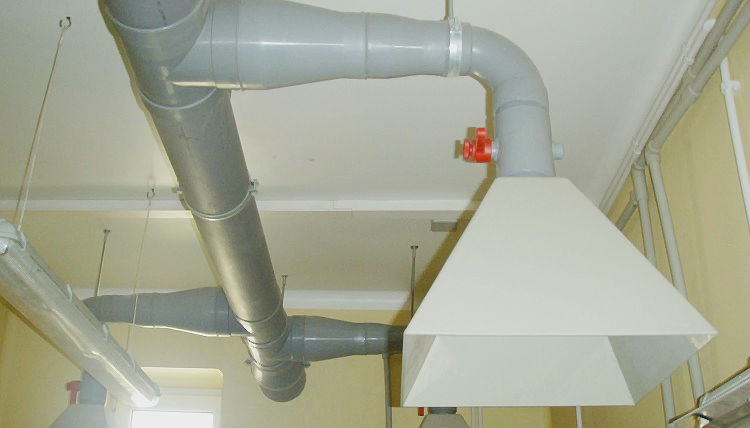
Polymer ducts can be used for forced ventilation, which involves the installation of an exhaust device
However (like any other material) polypropylene has some disadvantages. Consider them:
- lack of resistance to high temperatures;
- poor fire resistance.
Varieties of ventilation communications
All ventilation communications are primarily classified by type of ventilation. Consider the three main varieties of ventilation structures by the type of ventilation:
- supply;
- exhaust;
- combined (supply and exhaust).
The first type of ventilation is mounted to supply fresh air to the premises. A distinctive feature of such communication is that it does not remove polluted air, but replaces it through the influx of fresh (hence the name).
Exhaust ventilation eliminates polluted air, however, does not deliver clean air to the premises. In order to ensure the normal functioning of the exhaust structure, it is necessary to compensate for the volume of exhaust air. This volume is compensated by the supply air.
Combined ventilation communication forms two flows that are oncoming.
Note! For effective air purification in rooms, the conventional type of polypropylene duct is excellent - technical. A distinctive feature of technical ventilation communication is that it is able to process large volumes of air.
Installation of any of the above ventilation systems must be guided by building codes and regulations (SNiP). Before starting the installation, it is recommended to draft a future design.
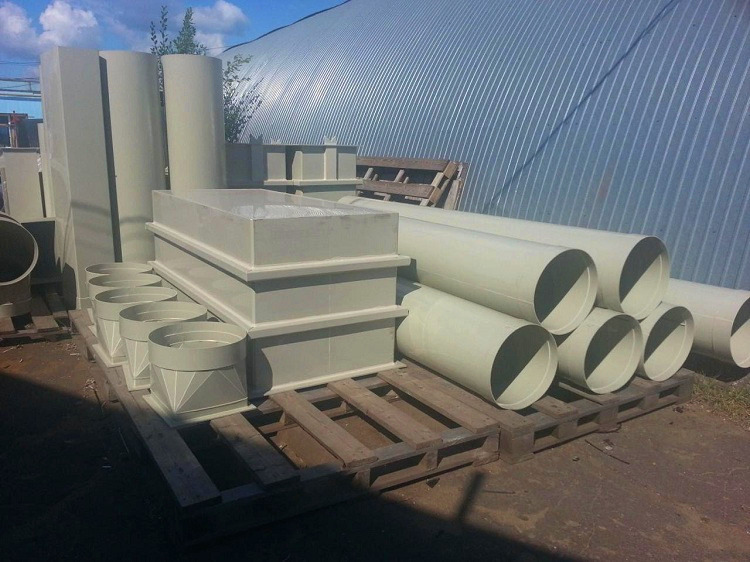
Polymer ducts are available with cross sections of different shapes, but round parts are considered the most effective
Dimensions and shapes of polypropylene ducts
Polypropylene ducts come in two forms:
- rectangular;
- round.
Rectangular The most common parameters of rectangular elements of polypropylene ventilation systems: 110x55, 120x60 and 204x60 mm. Rectangular products are used in industrial and residential buildings. Due to the rectangular shape, the installation of such products is considered the most simple. They are often installed in difficult situations.
Rectangular polypropylene products for ventilation can have a non-standard design, namely: the width is four times the height. Flat PP ducts can be easily assembled with your own hands. Such products are used, as a rule, for organizing exhaust systems in the kitchen. The disadvantages of such ducts include:
- increased resistance to air;
- high noise figure during operation.
Round. Round polypropylene air ducts are more effective because they do not interfere with the movement of air flows. The cross-sectional index of such ventilation parts may vary. The most popular diameters are:
- 100 mm;
- 125 mm;
- 150 mm.
In communications mounted from round PP pipes, a low noise level is observed. However, the minus of such products is that, in contrast to rectangular ones, they look less presentable.
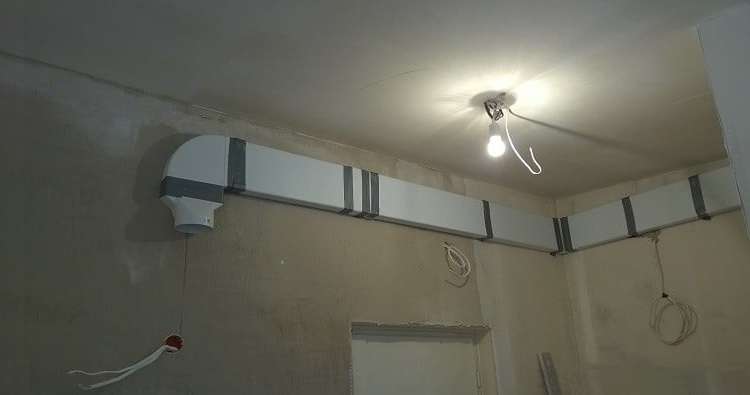
Flat pipes are easier to hide under the finish than round pipes, so this type of duct is popular in everyday life.
So what form is better to choose a duct? It all depends on the specific case and preferences of the residents of the house. If you want your duct to look aesthetically pleasing, then, of course, the choice falls on a rectangular design. If efficiency is in the foreground for you, then it is necessary to tip the scales in the direction of round communication.
Polypropylene communication can be:
- hard;
- flexible.
Note! Flexible PP ducts are used, as a rule, in laboratories or on construction sites (for smoke extraction). Such air ducts are categorically not recommended as home ventilation, because they, due to the peculiarities of their structure (corrugation), accumulate dust and dirt very quickly.
Tips for choosing PP ducts
How to choose a polypropylene duct? First of all, when choosing such details, it is necessary to pay attention to two main parameters. Consider them:
- the size;
- structure.
Both of these parameters must be taken into account in order for the airborne structure to fit harmoniously into the interior of the room.
Consider a few more tips for acquiring polypropylene ducts:
- due to the low fire resistance of polypropylene, it is recommended to purchase products foil from the inside. The layer of foil helps to reduce the expansion of polypropylene with increasing temperature;
- Today there are many companies that produce these products. Experts do not recommend purchasing the cheapest air ducts, as in this case you may encounter low-quality products;
- It is recommended to pay attention to the marking where all the necessary data for this product are available.
Following all the recommendations and studying the features of the air ducts from the PP, you can easily choose the necessary option for a particular case. In addition, if necessary, you can always consult with a specialist who will help you choose quality products.
